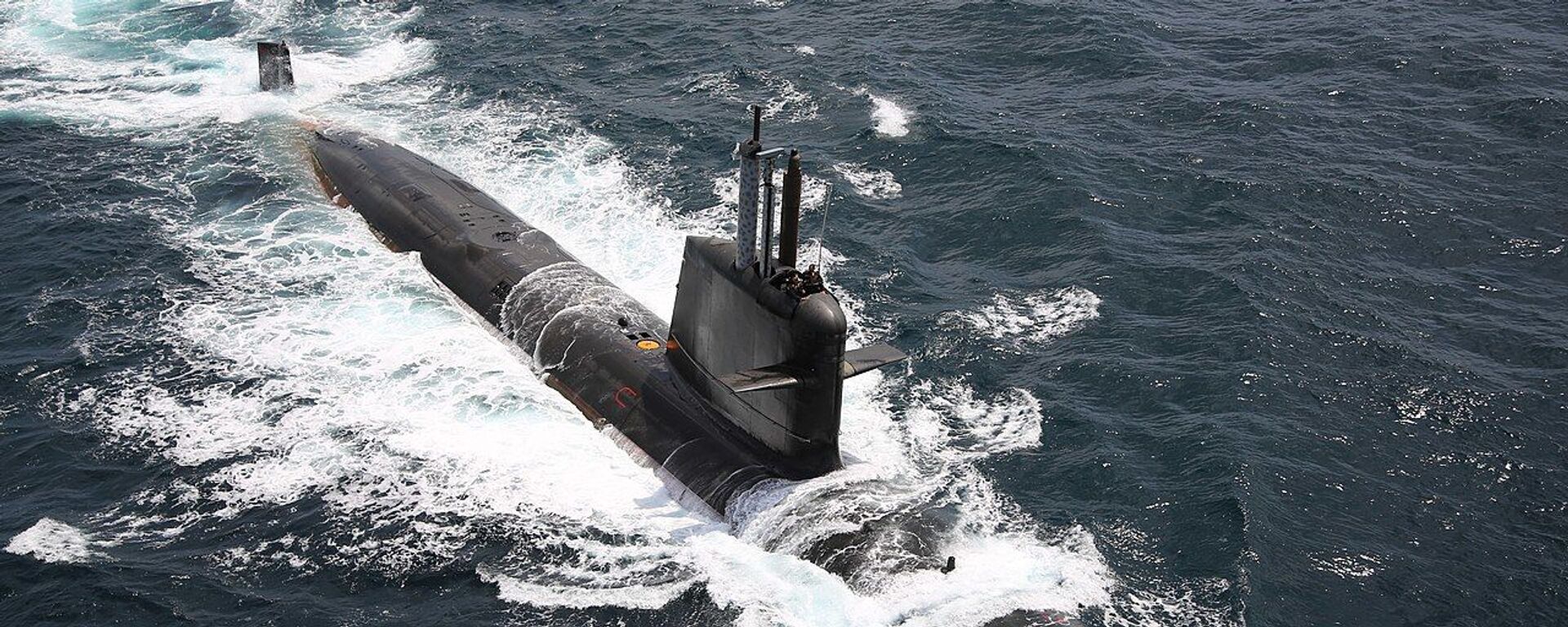https://sputnikglobe.com/20210803/india-developing-manned-sub-for-deep-sea-exploration-mining-and-biodiversity-analysis--1083516313.html
India Developing Manned Sub for Deep-Sea Exploration, Mining, and Biodiversity Analysis
India Developing Manned Sub for Deep-Sea Exploration, Mining, and Biodiversity Analysis
Sputnik International
In 2016, India signed a 15-year contract with the International Seabed Authority (ISA) for the exploration of polymetallic sulphides at the bottom of the... 03.08.2021, Sputnik International
2021-08-03T13:32+0000
2021-08-03T13:32+0000
2022-07-19T10:38+0000
newsfeed
world
indian ocean
marine life
https://cdn1.img.sputnikglobe.com/img/106758/32/1067583254_15:0:1783:1000_1920x0_80_0_0_6e01d1ca5c40ca9f3a022f3a2187ecdd.png
On Tuesday the Indian Government announced that it's developing a manned submersible capable of diving to depths of 600 metres. Delhi is also working on technologies for deep-sea mining and exploration missions to analyse marine biodiversity – a total of $549 million will be spent on the project – called Deep Ocean Mission – over five years.In June, the government approved Deep Ocean Mission to explore the ocean beds for precious minerals and explore flora and fauna. The project has been pending since 2018 and will also involve India's ocean climate change advisory services. The United Nation's International Sea Bed Authority has allotted an area of 75,000 square kilometres in the Central Indian Ocean Basin (CIOB) for the exploitation of polymetallic nodules (PMN). Reportedly, approximately 380 million metric tonnes of polymetallic nodules are present at the bottom of the Central Indian Ocean. These nodules contain precious minerals like manganese, iron, nickel, copper, and cobalt. Currently, the technology required to mine these nodules is not commercially available. Around 40 years ago, the Indian research vessel "Gaveshani" recovered the first polymetallic nodule samples from the Indian ocean, becoming a pioneer in the exploration of deep-sea minerals in the process. The likes of China, France, Germany, Japan, South Korea, and Russia are also developing their own technology to mine the ocean's depths, and many nations are reportedly testing equipment is shallow waters. This type of mining, however, has been flagged by environmentalists, who say it will damage marine biodiversity. According to the International Union for Conservation of Nature (IUCN), species such as whales, tuna, and sharks could be affected by noise, vibrations, and light pollution caused by mining equipment.
https://sputnikglobe.com/20210604/india-gives-nod-to-build-more-conventional-submarines-amid-power-battle-with-china-in-indian-ocean-1083071914.html
indian ocean
Sputnik International
feedback@sputniknews.com
+74956456601
MIA „Rossiya Segodnya“
2021
Sushmita Panda
https://cdn1.img.sputnikglobe.com/img/07e5/05/12/1082926186_0:0:2048:2048_100x100_80_0_0_4474d0d7e27a36878eb8727832be74b4.jpg
Sushmita Panda
https://cdn1.img.sputnikglobe.com/img/07e5/05/12/1082926186_0:0:2048:2048_100x100_80_0_0_4474d0d7e27a36878eb8727832be74b4.jpg
News
en_EN
Sputnik International
feedback@sputniknews.com
+74956456601
MIA „Rossiya Segodnya“
Sputnik International
feedback@sputniknews.com
+74956456601
MIA „Rossiya Segodnya“
Sushmita Panda
https://cdn1.img.sputnikglobe.com/img/07e5/05/12/1082926186_0:0:2048:2048_100x100_80_0_0_4474d0d7e27a36878eb8727832be74b4.jpg
newsfeed, indian ocean, marine life
newsfeed, indian ocean, marine life
India Developing Manned Sub for Deep-Sea Exploration, Mining, and Biodiversity Analysis
13:32 GMT 03.08.2021 (Updated: 10:38 GMT 19.07.2022) In 2016, India signed a 15-year contract with the International Seabed Authority (ISA) for the exploration of polymetallic sulphides at the bottom of the Indian Ocean.
On Tuesday the Indian Government announced that it's developing a manned submersible capable of diving to depths of 600 metres. Delhi is also working on technologies for deep-sea mining and exploration missions to analyse marine biodiversity – a total of $549 million will be spent on the project – called Deep Ocean Mission – over five years.
"The scientists will also develop technologies for deep-sea mining, exploration of deep-sea mineral resources and marine biodiversity, acquisition of a research vessel for ocean exploration, deep-sea observations, and capacity building in marine biology," a government minister stated.
In June, the government approved
Deep Ocean Mission to explore the ocean beds for precious minerals and explore flora and fauna. The project has been pending since 2018 and will also involve India's ocean climate change advisory services.
The United Nation's International Sea Bed Authority has allotted an area of 75,000 square kilometres in the Central Indian Ocean Basin (CIOB) for the exploitation of polymetallic nodules (PMN). Reportedly, approximately 380 million metric tonnes of polymetallic nodules are present at the bottom of the Central Indian Ocean. These nodules contain precious minerals like manganese, iron, nickel, copper, and cobalt. Currently, the technology required to mine these nodules is not commercially available.
Around 40 years ago, the Indian research vessel "Gaveshani" recovered the first polymetallic nodule samples from the Indian ocean, becoming a pioneer in the exploration of deep-sea minerals in the process.
The likes of China, France, Germany, Japan, South Korea, and Russia are also developing their own technology to mine the ocean's depths, and many nations are reportedly testing equipment is shallow waters.
This type of mining, however, has been flagged by environmentalists, who say it will damage marine biodiversity. According to the International Union for Conservation of Nature (IUCN), species such as whales, tuna, and sharks could be affected by noise, vibrations, and light pollution caused by mining equipment.




